By Charlotte Brontë
‘Jane Eyre’ by Charlotte Brontë is a pure masterwork of an English classic that still lives its relevance in today’s society despite having been around for more than a century and a half.
About the Book

Article written by Victor Onuorah
Degree in Journalism from University of Nigeria, Nsukka.
‘ Jane Eyre ’ proved a blockbuster following its 1847 publication as it became a book that gave voice to the voiceless, resilience to the weak, and spirit of honest activism to the seemingly lesser gender. Through Charlotte Brontë’s bestseller , there was an awakening in the urgency to tackle gender-related issues by society.

A Descriptive Tale on a Search for True Purpose
‘ Jane Eyre ’ by Charlotte Brontë is one of the most remarkably written classics I’ve read. The book is enriched with a touching story of a plain English country girl who is forced to endure a harsh childhood being an orphan and taken in under the guidance of her maltreating aunt, Mrs. Reed, and her bullish children.
From the get-go, Jane seems to be the only character in Charlotte Brontë’s ‘ Jane Eyre ’ who seeks something much more than the mere routines of life, and she shows such desire from the first pages of the book – around when she’s young and about ten years old. Given Jane starts out being headstrong and a little sassy, I wouldn’t blame her too much because she’s just a smart and active little girl trying to protect herself over at Gateshead, a place where she’s surrounded by people who are supposed to be her family but are not.
Jane’s childhood rebellion, however, is never out of place. By rough estimation, those youthful angsts indicate her disagreement with her current life treated with biases and lies, and later, we see the extent of this mentality to society and the state of affairs therein. Jane is, by description, a self-reformer interested in finding that one true purpose in life.
She learns tremendously through life – and in all necessary disciplines enough to refine herself into the person she wants to be. Morals and values through religion. People relations and handling skills through experiences with terrible and as well good and kind people she’s met. In the end, Jane will pick bits and pieces of the core things that form her true purpose and piece them together. She’s happy at last because, against society’s pretentious family, she discovers her voice and finds her personality.
Providence Always Remembers the Upright
It’s nearly a miracle how Jane survives throughout every stage of the book. Frankly, ‘ Jane Eyre ’ is a chancy book that creates such a scary reality for a fairly helpless little girl. Still, the daring and fearless narrative is also a reason author Charlotte Brontë scores points on ‘ Jane Eyre ’ because there are at least a few million young girls and boys who go through this same struggle, or worse, in their respective reality.
However, thank gracious how providence always seems to turn up for Jane in dangerous and difficult situations (and I hope, for God’s sake, it turns up for the million youthful others worldwide who can relate to this story). First off, the readers will notice how, in aunt Reed’s home at Gateshead, providence uses a servant, Bessie, to feed, care for, and serve as a mother figure to maltreatment, starving Jane. She probably wouldn’t have survived long enough to experience Lowood School, not to mention Thornfield, Moor House, or Ferndean.
Another worthy mention of a good meddling of the saving hands of providence is the part right after Jane disappointedly leaves Thornfield and Mr. Rochester after finding out that he (Mr. Rochester) had been lying to her about not having a wife. Sad and depressed and without a home or a destination, Jane wanders the dangerous streets, sleeps in them, begs, and collects scraps for food. No bad thing happens to her, from the poor food, street hooligans, etc. This is sheer providence.
A Rollercoaster Ride of Love and Heartbreaks
There are at least two heartbreaks, Jane, the protagonist, faces in the book, and I would think one of the two hurt her the most. Let’s start with the one that didn’t hurt so much, Jane’s experience with her cousin St. John Rivers. A homeless Jane is taken in by St. John Rivers and his sisters, cleaned, fed, and cared for. She bounces back to her gracious self, and it doesn’t take long for St. John to fall for her.
When this happens, the next thing that follows is heartbreak. For even though Jane cares so much about John, she doesn’t love him enough to want to spend the rest of her life with him. However, after the saga, she is buried in thought, despondent over it, and decides to leave Moor House and the presence of St. John.
The other instance, and the one that hurts so much for Jane, is the event over at Thornfield involving Mr. Rochester. Jane is particularly broken by this because she genuinely loves him and is going to walk down the aisle with him until she finds out he has a crazy legal wife locked up in the attic.
How does Jane survive three days straight in the streets without money, shelter, or food?
Jane is lucky enough to go unscathed, having spent days out in the streets after a fallout with Mr. Rochester, although she now has to survive the hard way by begging for food and sleeping anywhere a proper shelter.
What are the pros of Charlotte Brontë’s ‘ Jane Eyre ’?
The story of ‘ Jane Eyre ’ is loved for its ability to tackle difficult topics in female gender rights, social decadence, and poverty, among other things.
Are there any cons in ‘ Jane Eyre ’ by Charlotte Brontë?
There are a few cons in Charlotte Brontë’s ‘ Jane Eyre ,’ and mentioning some would include the book’s display of immorality and anti-social tendencies.
Jane Eyre Review

Book Title: Jane Eyre
Book Description: 'Jane Eyre' by Charlotte Brontë is a powerful narrative of resilience and integrity, where young Jane confronts a male-dominated society, challenging norms and advocating for gender equality and dignity.
Book Author: Charlotte Brontë
Book Edition: First Edition
Book Format: Hardcover
Publisher - Organization: Smith, Elder & Co.
Date published: October 16, 1847
ISBN: 978-0140437286
Number Of Pages: 479
Jane Eyre Review: You Can Impact Society and Make a Change Irrespective of Your Background, Gender or Age
Charlotte Brontë’s eponymous book, ‘Jane Eyre,’ shows us how integrity and good ideas can help bring a meaningful change in society – regardless of age, gender, ethnicity, or skin color. 10-year-old Jane overcomes maltreatment in a foster home to face a ruthless and brutal society controlled by men. With women like her already bowing to the pressures, Jane finds herself up against an uphill battle to reclaim the relevance of her gender and the pride of the humble and oppressed.
- Rich storyline
- Well-defined characters
- Gender equality activization
- Gender stereotype
- Immorality issues
- Overly French for an English read

About Victor Onuorah
Victor is as much a prolific writer as he is an avid reader. With a degree in Journalism, he goes around scouring literary storehouses and archives; picking up, dusting the dirt off, and leaving clean even the most crooked pieces of literature all with the skill of analysis.
Cite This Page
Onuorah, Victor " Jane Eyre Review ⭐ " Book Analysis , https://bookanalysis.com/charlotte-bronte/jane-eyre/review/ . Accessed 5 April 2024.
It'll change your perspective on books forever.
Discover 5 Secrets to the Greatest Literature
There was a problem reporting this post.
Block Member?
Please confirm you want to block this member.
You will no longer be able to:
- See blocked member's posts
- Mention this member in posts
- Invite this member to groups
Please allow a few minutes for this process to complete.

07 Oct Charlotte Brontë’s Jane Eyre: In-depth Book Review and Analysis
Introduction:.
Jane Eyre by Charlotte Brontë is a seminal piece that burgeons with profound themes and rich character development, making it a must-read for those intrigued by 19th-century literature . This review delves into the essence of Brontë’s narrative, examining its literary anatomy and socio-cultural underpinnings. Recommended reading age is 14 and above due to mature themes.
The narrative follows Jane Eyre , an orphaned girl, who navigates a world often hostile towards her. Through her experiences at Lowood School , and later, at Thornfield Hall as a governess, the book explores themes of love, independence, and the struggle against societal expectations.
Jane Eyre stands robust in its storytelling and characterization, yet, its pacing can be tedious for modern readers. The book, through its meticulous narrative and a strong, independent protagonist, encourages dialogue on gender roles and social status, making it a significant read. Literary devices such as foreshadowing, symbolism, and irony are intricately woven into the fabric of the narrative. The storyline mirrors Brontë’s own life, echoing her reflections on women’s independence and social criticism.
Evaluation:
Readers who appreciate a blend of romance, social critique, and a journey of self-discovery would find Jane Eyre engaging. Compared to other works like Wuthering Heights by her sister Emily, Jane Eyre is less dark yet equally poignant. The book is highly recommended for its enduring relevance and insightful exploration of human emotions and societal norms.
Possible questions for a high school test:
- Answer: By seeking independence, education, and challenging gender roles.
- Answer: The ‘Red Room’ symbolizes Jane’s imprisonment and her fear of oppression.
- Answer: Examples include Mr. Rochester’s disguises, hinting at his deceptive nature or the eerie laughter foreshadowing the revelation of Bertha Mason.
Awards and accolades:
While awards as we know them weren’t prevalent when published, the books critical acclaim has secured its place as a classic in English literature .
Functional details about the book:
- ISBN: Varies by edition
- Pages: ~500
- Publisher: Various publishers due to its public domain status
- First Published: 1847
- Adaptations: Numerous, including films, TV shows, and stage plays
- Genre: Novel, Bildungsroman
- BISAC Categories: Fiction / Classics
- Suggested Reading Age: 14 and up
Opening Excerpt of the book:
Excerpt from Jane Eyre | Penguin Random House Canada
Other Reviews:
Numerous reviews are available online, reflecting a high appreciation for its narrative and the protagonist’s strong character.
Where to buy the book:
Jane Eyre on Bookshop.org
Is this book part of a series?
No, it’s a standalone novel.
About the author:
Charlotte Brontë, born in 1816, was an English novelist and poet, the eldest of the three Brontë sisters, all of whom were literary figures. Besides Jane Eyre , she authored Shirley and Villette . Although not awarded in her time, her work has left an indelible mark on literature.
Share this:
Common Sense Media
Movie & TV reviews for parents
- For Parents
- For Educators
- Our Work and Impact
Or browse by category:
- Get the app
- Movie Reviews
- Best Movie Lists
- Best Movies on Netflix, Disney+, and More
Common Sense Selections for Movies

50 Modern Movies All Kids Should Watch Before They're 12

- Best TV Lists
- Best TV Shows on Netflix, Disney+, and More
- Common Sense Selections for TV
- Video Reviews of TV Shows

Best Kids' Shows on Disney+

Best Kids' TV Shows on Netflix
- Book Reviews
- Best Book Lists
- Common Sense Selections for Books

8 Tips for Getting Kids Hooked on Books

50 Books All Kids Should Read Before They're 12
- Game Reviews
- Best Game Lists
Common Sense Selections for Games
- Video Reviews of Games

Nintendo Switch Games for Family Fun

- Podcast Reviews
- Best Podcast Lists
Common Sense Selections for Podcasts

Parents' Guide to Podcasts

- App Reviews
- Best App Lists

Social Networking for Teens

Gun-Free Action Game Apps

Reviews for AI Apps and Tools
- YouTube Channel Reviews
- YouTube Kids Channels by Topic

Parents' Ultimate Guide to YouTube Kids

YouTube Kids Channels for Gamers
- Preschoolers (2-4)
- Little Kids (5-7)
- Big Kids (8-9)
- Pre-Teens (10-12)
- Teens (13+)
- Screen Time
- Social Media
- Online Safety
- Identity and Community

Explaining the News to Our Kids
- Family Tech Planners
- Digital Skills
- All Articles
- Latino Culture
- Black Voices
- Asian Stories
- Native Narratives
- LGBTQ+ Pride
- Best of Diverse Representation List

Celebrating Black History Month

Movies and TV Shows with Arab Leads

Celebrate Hip-Hop's 50th Anniversary
Common sense media reviewers.

Strength of character triumphs in Bronte's masterpiece.

A Lot or a Little?
What you will—and won't—find in this book.
Young Jane is sad, hungry, and misunderstood durin
Jane Eyre is a 19th-century gothic romance of the
Jane Eyre possesses such impressive strength of ch
As a young child, Jane is pushed and struck by her
The characters kiss and describe romantic feelings
Since the novel is set in Victorian England, there
Wine, beer, and gin are sometimes consumed -- most
Parents need to know that Charlotte Bronte's classic romantic novel does not contain "mature themes" in the modern sense, but it does require a mature reader to comprehend the characters' complex relationships and inner turmoil, and to take in the troubling events that occur: Children are abused and…
Educational Value
Young Jane is sad, hungry, and misunderstood during the first half of her career at Lowood School, but conditions improve and she dedicates herself to her studies. Her education becomes one of her greatest assets; it is her way out of Lowood, and twice enables her to support herself: first as Adele's governess in Thornfield Hall, and then as a school teacher in Morton.
Positive Messages
Jane Eyre is a 19th-century gothic romance of the highest order, but it's an unconventional one. The message here is that Jane is better off single than with the wrong partner, or a partner who asks her to betray her own conscience. In a cruel world full of chaos and madness, Jane Eyre listens to her mind at least as much as her heart. She always does what she knows is right, and she knows her own worth.
Positive Role Models
Jane Eyre possesses such impressive strength of character -- a powerful sense of her own self-worth and moral fiber, despite the abuse and neglect she suffers in her Aunt Reed's house and at Lowood School. Her opportunities are limited by her finances and by Victorian gender roles, but she is always guided by her own conscience and intelligence, and is one of the strongest female characters in English literature. During her formative years, Jane herself learns from the example set by two friends at Lowood, her classmate Helen Burns, a sickly child but the soul of Christian patience and goodness, and School Superintendent Maria Temple, a firm but kind teacher whom Jane eventually emulates.
Violence & Scariness
As a young child, Jane is pushed and struck by her young cousins, and locked in a dark room as punishment. As an adult at Thornfield Hall, she is asked to nurse Rochester's brother-in-law, Richard Mason, when he is savagely stabbed and bitten by a madwoman -- this is a bloody scene. Fire breaks out at Thornfield Hall twice. The second time, Rochester is wounded and a woman jumps from the roof to her death.
Did you know you can flag iffy content? Adjust limits for Violence & Scariness in your kid's entertainment guide.
Sex, Romance & Nudity
The characters kiss and describe romantic feelings. Rochester speaks of previous adulterous affairs.
Did you know you can flag iffy content? Adjust limits for Sex, Romance & Nudity in your kid's entertainment guide.
Products & Purchases
Since the novel is set in Victorian England, there are no product names to drop, but the quality or type of the characters' dress is often viewed as indicative of their wealth and station.
Drinking, Drugs & Smoking
Wine, beer, and gin are sometimes consumed -- mostly for medicinal purposes. Rochester also smokes the occasional cigar. After Jane leaves Rochester, she worries about what "opiate" state he may have entered.
Did you know you can flag iffy content? Adjust limits for Drinking, Drugs & Smoking in your kid's entertainment guide.
Parents Need to Know
Parents need to know that Charlotte Bronte's classic romantic novel does not contain "mature themes" in the modern sense, but it does require a mature reader to comprehend the characters' complex relationships and inner turmoil, and to take in the troubling events that occur: Children are abused and neglected; half of the students of Lowood School die of typhus, while the other half are malnourished and cold. Mental illness and adulterous affairs figure in the story, as well.
Where to Read
Community reviews.
- Parents say (5)
- Kids say (33)
Based on 5 parent reviews
It was boring
What's the story.
When the novel begins, Jane Eyre is a 9-year-old orphan who is dependent on a heartless, widowed aunt, Mrs. Reed. Resentful of her late husband's affection for Jane, Mrs. Reed neglects her niece, then sends her to a \"charity school,\" Lowood, where students are raised on strict rules and a poor diet, ostensibly in preparation for a harsh life. In spite of these obstacles, Jane succeeds as a student and then as a teacher, and after nine years, leaves Lowood to serve as governess to Adele, the young ward of Edward Rochester, master of mysterious Thornfield Hall. At 18, Jane gets engaged to the stern and aloof Rochester, and on their wedding day, Jane learns his secret, which leads to her becoming an independent woman.
Is It Any Good?
Charlotte Bronte's classic romantic novel is simply one of the greatest works of English fiction. Jane's independence, fortitude, and intelligence render her one of literature's strongest female characters, and the passionate love between Jane and Rochester is a romance for the ages. Bronte's development of that relationship, set against the mysteries within Thornfield Hall, is peerless.
Talk to Your Kids About ...
Families can talk about the moral struggle that Jane faces when she learns Rochester's secret. Why does Jane feel she must leave Thornfield Hall?
Jane Eyre is as an unconventional heroine, a young woman ahead of her time. What makes Jane different from other female main characters in novels of Bronte's era -- from Jane Austen's women, for example? What makes Jane seem old-fashioned, and what makes her timeless?
Book Details
- Author : Charlotte Bronte
- Genre : Romance
- Book type : Fiction
- Publisher : Harper Press
- Publication date : October 16, 1900
- Number of pages : 490
- Last updated : April 23, 2020
Did we miss something on diversity?
Research shows a connection between kids' healthy self-esteem and positive portrayals in media. That's why we've added a new "Diverse Representations" section to our reviews that will be rolling out on an ongoing basis. You can help us help kids by suggesting a diversity update.
Suggest an Update
Our editors recommend.

Pride & Prejudice

Wuthering Heights (1939)
Historical fiction, classic books for kids.
Common Sense Media's unbiased ratings are created by expert reviewers and aren't influenced by the product's creators or by any of our funders, affiliates, or partners.

- Book Reviews
- Classic & Masterpieces
- Books for Women
- Parenting & Childrens Reads
- Holiday Books
- Biz & Investing Books
- Health & Fitness Books
- Self-Help Books
- Genre Fiction Books
- Book Recommender Tool
- Book Comparison Tool
- Synonym & Related Words Explorer Tool
- Recipe Generator Tool
Book Recommendations & Reviews
Explore curated book suggestions and insightful reviews of fiction, novels, and nonfiction on your trusted site...
'ReadingAndThinking.com' content is reader-supported. "As an Amazon Associate, When you buy through links on our site, we may earn an affiliate commission."
- Book-Reviews
Charlotte Bronte's Jane Eyre: The Most Captivating Love Story of All Time?
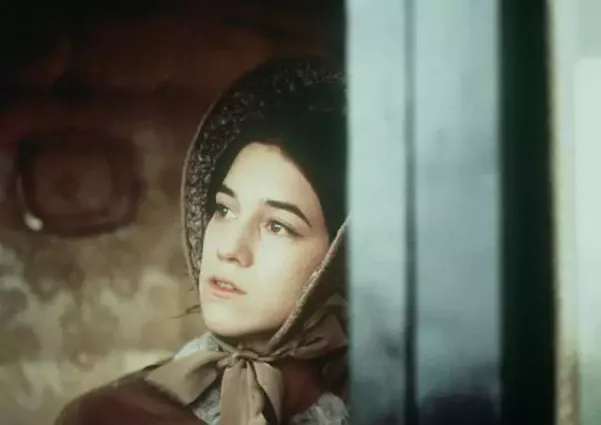

About the Author: Charlotte Bronte
Book: jane eyre by charlotte bronte .
- Author: Charlotte Brontë
- Publisher: Bantam Classics
- Publication year: 1983-10-1
- Pages: 492
- Finishing: Paperback
Excerpts from the original text
Life is too short for me to hold grudges. In this world, everyone must be at fault. But I believe that one day soon, we will get rid of our corrupt bodies and we will get rid of these faults. Fall and sin will leave us with cumbersome flesh and blood, leaving only the spark of spirit. This is the source of life and thought, just as pure as when it left the Creator and gave life to it. Where it came from and where it went, perhaps it sneaked into creatures higher than human beings; perhaps it passed through various levels of glory, first illuminating the pale soul of human beings, and then illuminating the seraphim. —— Quoted from page 56

Book Summary
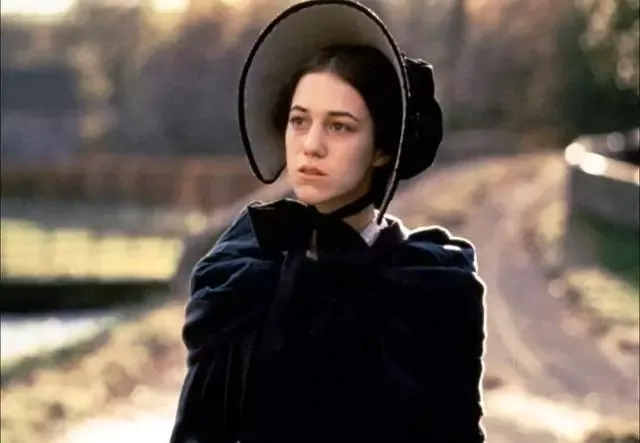
Book Review and Analysis
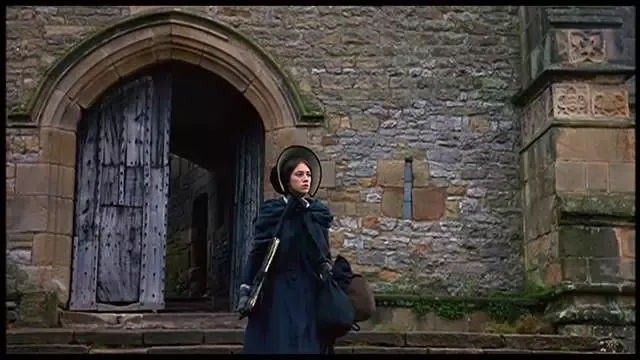
Reason for selling well: Sympathy
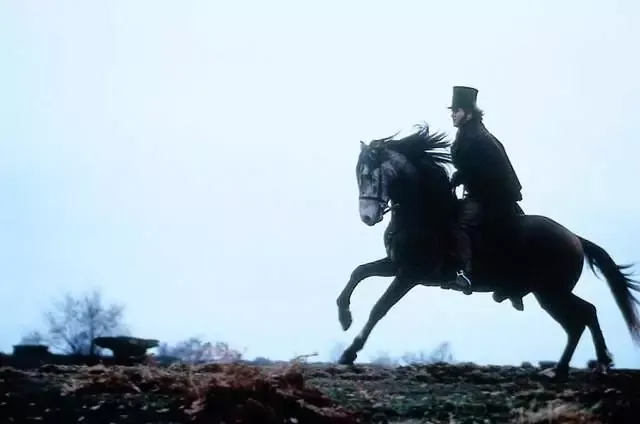
Background, class emphasis, nobility, and the poor
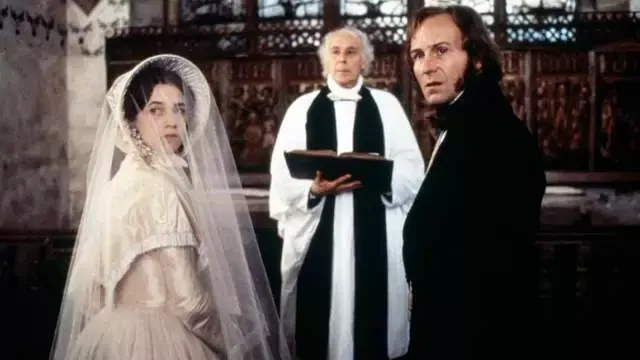
Racial Superiority
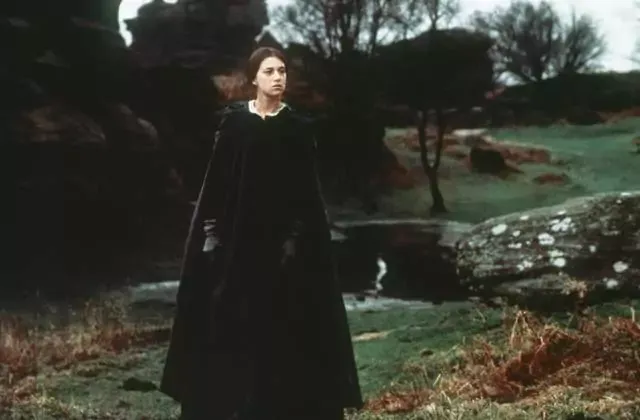
Religious background, Jane’s religious views
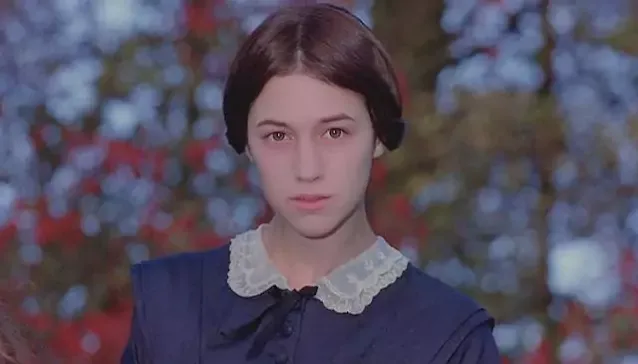
Characters in literary rhetoric, mirrored roles, dual-corresponding characters, contrasts between bright and dark figures
End, st. john, he or be, spiritual phenomenon of gothic novel style.

Quotes from Jane Eyre with page numbers
"Do you think that because I am poor, humble, not beautiful, and short, I have no soul and no heart? You are wrong! My soul is the same as yours, and my heart is exactly the same as yours. If God grants My wealth and beauty, I will make it difficult for you to leave me, just as it is difficult for me to leave you now! If God grants me a little beauty and a little wealth, I will make you feel hard to leave me, just like I am hard to leave you now. I am talking to you now, not through customs, conventions, or even through mortal bodies—but my spirit is talking to your spirit; it’s like two of them have passed through the grave, and we are standing in front of God’s feet. Equal-because we are equal!" ——Jane Eyre
Then you are wrong, you don't understand me at all, don't understand the kind of love I can have at all. Every atom in your flesh is as close to me as my own; it is in pain, but it is still close. Your heart is my treasure house, even if it is broken, it is still my treasure house; if you go crazy, it will be my arm instead of the tight-fitting vest that restrains you—let you hold on tightly, even in your When I am angry, I always feel a charm... ——Jane Eyre said to Rochester
When we are beaten for no reason, we should fight back fiercely; I'm sure we should fight back fiercely, to teach the person who beat us, so that he will never dare to beat people like this again. ——Jane Eyre who dares to love and hate
Some people, no matter how I please them or hate me, then I can't help but hate them; some people, give me unfair punishment, then I can't help but resist. This is natural. Just as some people love me, I love them, or when I feel that I deserve to be punished, I will be punished willingly. ——Jane Eyre with clear love and hate.
Human nature is such that it cannot be perfect! Even on the brightest planet, there will be such black spots; and Miss Sketchel's eyes can only see the small flaws, but can't see the star's radiant light. ——Jane Eyre
In my opinion, life is too short to remember hatred. In the human world, all of us have sinned, and it is impossible not to be so; but I believe that one day, we will be freed from our rotten bodies, and we will be free from these sins, and depravity and sins will follow us. The cumbersome body of flesh and blood leaves us, leaving only the spark of the spirit—the intangible principles of life and thought, as pure as when it left the Creator to give life to all things; where did it come from and where did it go back? ; Maybe it has entered into a higher creature than humans—maybe ascend according to the taste of glory, from the pale human soul to the bright archangel! ——Helen said
Your enemies must love them; those who curse you must bless them; those who hate you and insult you must treat them well. ——Helen quoted from "Bible · New Testament · Luke."
Even if people all over the world hate you and believe you are bad, as long as you have a clear conscience, you will not be without friends. ——Helen to Jane Eyre.
Book Recommender
LOOKING FOR MORE BOOKS TO READ?
Explore and find your next good read - Book Recommender for specific interests.
Discover ratings, reviews, summaries, and genres from Google Books.

About Muhiuddin Alam
Muhiuddin Alam is the Founder and Editor-in-Chief of ReadingAndThinking.com. He serves as a consistent contributor to various websites and publications, including Medium , Quora , Reddit , Linkedin , Substack , Vocal , Flipboard , and Amazon KDP . Alam personally read numerous books and, for the past 10 years, has been providing book recommendations and reviews. Find Me: About Me & Google Knowledge Panel .
Stay up to date with the latest posts and relevant updates from us.
Your information is protected and I never spam, ever.
Reading Rewards
Do you prefer to listen rather than read? If so, here’s a nice opportunity to try Audible for 30 days.
- Get a 30-day Audible free trial
- 30-day Kindle Unlimited free trial
- 30-day Amazon Prime free trial
Need a bookish gift? Give the gift of reading to the book lovers in your life.
- Give an Audible Subscription
- Give a Kindle Unlimited Subscription
Popular Posts

25 Best Books to Attract Women You Should Read
Today we will share with you the 25 Best Books to Attract Women You Should Read. Men like to impress women. Let's put it more simply: i...

The 15 Best Parenting Books for Dads to read in 2024
Welcome to an insightful journey through the ' 15 Best Parenting Books for Dads to Read in 2024 ,' written by Muhiuddin Alam on the...
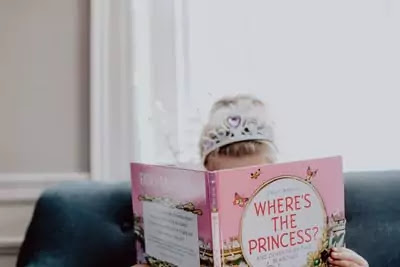
30 Hilariously Most Inappropriate Children's Books (Adults)
Welcome to an insightful journey through the ' 30 hilariously most inappropriate children's books (adults) ,' written by Muhiudd...

The 18 Best Books on Logic and Logical Thinking
Feel that your brain is not enough? These best books on logic and logical thinking for beginners will make you a smart person and improve lo...
Recent Post
Discover the book reviews, books by subject.
- Best-Cook-Books [32]
- Best-Holiday-Books [14]
- Book-Reviews [53]
- Books-For-Women [27]
- Business-and-Investing-Books [14]
- Genre-Fiction-Books [20]
- Health-Fitness-Books [11]
- Learning [6]
- Masterpieces [38]
- Parenting-Guides [34]
- Self-Help-Books [19]
- International edition
- Australia edition
- Europe edition
Jane Eyre by Charlotte Bronte – review
‘At first I was struck most by Bronte’s writing style, which is eloquent and beautiful, but then the storyline caught up with me and I fell in love with that too’
I learned only recently that Charlotte Bronte is a masterful writer. She crafted the story of Jane Eyre, a tale following young, abused Jane, through her experiences in school, then as a governess, and finally as a young independent women. As the story progresses, Ms. Bronte introduces a series of characters (Rochester, Helen Burns, Blanche Ingrim, St. John River, etc.) that also affect Jane’s life and kind of get the ball rolling for her character growth.
So much happened in this book to fit into a little biased box that is a review, but I can say that overall, I loved Jane Eyre. At first I was struck most by Bronte’s writing style, which is eloquent and beautiful, but then the storyline caught up with me and I fell in love with that too.
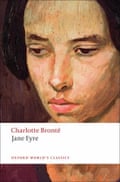
For me, the best part of the story was the beginning, when Jane is at Lowood School and defining herself as a person. The book could have ended there, but then Jane went to live with the horrible, horrible Rochester. To say the least, I hated him. He probably had some redeemable qualities, but I didn’t see them. As I read the story, I physically cringed ever time he was in a scene…. But the writing won out and I finished the book and am happy I did because Jane’s growth overpowers any hatred of Rochester (even my burning enmity).
Unfortunately, at times the profound language of the book was difficult to get through and I found myself trudging through the words rather than letting them carry me away. And sometimes the story grew very gloomy and creepy (ahem, Bertha Mason).
This book is definitely a commitment so if you have a fear of long books or thoughtful language, you might want to watch the movie instead. However, this classic book is really worth reading just for Jane and you should know that if you feel that Rochester is a conniving, disgusting, ridiculous, jerky playboy, you are not alone.
I would give this tome a 4.3/5 rating. I know, a little specific, but I really loved the book overall and only disliked how overburdened the language was at times and the actions of some of the characters (specifically one whose name starts with R and ends with -ochester). Also, I was really only completely hooked by the story in the beginning and the rest I had to get into much slower.
- Buy this book at the Guardian Bookshop
Want to tell the world about a book you’ve read? Join the site and send us your review!
- Children's books
- Children and teenagers
- Charlotte Brontë
- Teen romance books for childrens and teens
- children's user reviews
Most viewed

Book review: Jane Eyre by Charlotte Bronte
- July 27, 2017
- Fleur Morrison
- Book Reviews
Some books are so famous that it seems redundant to review them, but it’s always nice to see a classic book through new eyes. This is true of Jane Eyre , which continues to attract new generations of readers, who experience the book in a different way than its original readers, but continue to find its themes relevant and its story readable. It’s easy to see why Jane Eyre has experienced the enduring popularity that it has.
Its protagonist and title character is a feisty, principled woman who was brought up in hardship with little love and affection, and throughout the novel, seeks a place where she can be at peace.
Jane Eyre’s parents died when she was young, and she is sent to live with her relatives. In the fashion of fictional stepmothers, she was treated badly by her aunt, as well as her cousins.
She is offered an escape from her harsh existence when she is sent to a boarding school, where she meets mixed experiences, ranging from the strict discipline of the school routine and a cruel headmaster to the exhilarating affection of newfound friends – a novelty in her life so far.
After years as a student, then a teacher, when she find contentment and purpose, she eventually decides she must move on to experience the wider world, and finds a place as a governess for a young girl. Here she meets Mr Rochester. Few readers would not be familiar with the love story between Jane and Mr Rochester as it is an enduring staple of popular culture, in music, film, and literature, and the shock that comes towards the end of the book might not surprise many, but I’d better not offer any spoilers.
It is interesting to read a book written long ago, but with a female protagonist who is far from the submissive woman that was often portrayed in the fiction, and preferred in society, of the time. Yet, there are some parts of the book that might not sit so well with the modern feminist, including Jane’s fierce belief in the importance of a woman’s modesty, as well as some of Mr Rochester’s actions.
I appreciated that the story emphasised Jane’s inner self, rather than her appearance – I have written before about the tendency of writers to create female protagonists of great beauty , often as a moral lesson for women. Instead, Jane’s looks are not a driving force in the book; it is her diligence, kindness and sense of right and wrong that rise to the fore.
However, ultimately, Jane Eyre remains an engaging book of love and hope, of a young woman rising above difficult circumstances to find her place in the world. It is both comforting and engaging enough for modern readers to persist in finding a rhythm in the language that can initially be a bit of a struggle to relax into it.
The writer displays an endearing sincerity, as well as a steely determination and sense of morality that is hard to resist. There is no doubt as to why Jane Eyre endures as a much-loved classic as it does.
Readability score: 10/10
Jane Eyre is available at Booktopia (Australia) and The Book Depository (US and UK).
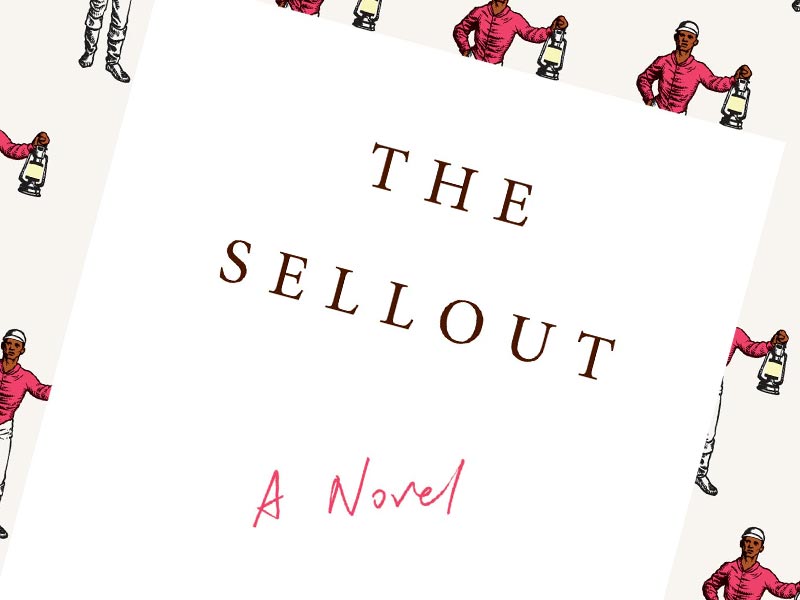
Review: The Sellout by Paul Beatty
Some books are so unlike any others that it takes a while to understand what…
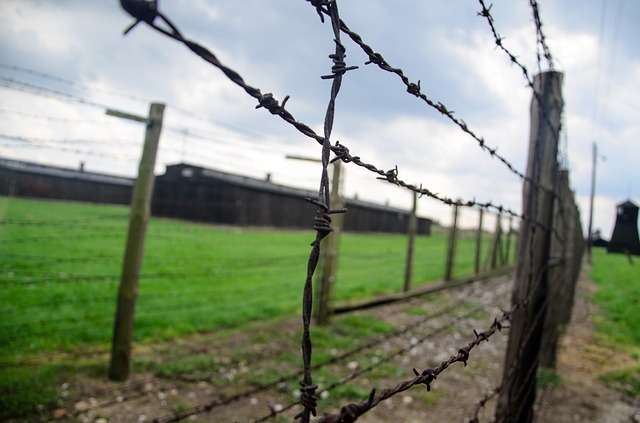
Charlotte Gray shines a light on the children of the Holocaust
It is very difficult to empathise with people we have never met, who lived a…

The Natural Way of Things – misogyny out loud
Sometimes it is not the spoken but the whispered threat that is the most menacing.…
Thanck you for this Review, bery usefull.
Leave a Reply Cancel reply
Your email address will not be published. Required fields are marked *
Save my name, email, and website in this browser for the next time I comment.
- previous post: Book review: Book review: Regeneration by Pat Barker
- next post: The Underground Railroad by Colson Whitehead

- Your Name: *
- Email Address *
Readability 2017. All Rights Reserved
- Children’s Books
- On Eating Alone: Hello, Table For One, Please?
- On Self-Care Driven By Products: Buy Them Bathsalts, Candles, And Yoga Mats
- On Social Media (also OTT and Headspace): What’s At The Bottom Of The 2-Hour Scroll?
- On Quiet: Shhh
- On Writing: Come, Let’s Make Sense Of The World
- On Serendipity: The Magic Of Bougainvilleas
- On Ignorance Of Conventional Emotional Achievements: Cheers To Emotional Normality
- On Attention: How Many Social Approvals Are There In My Post?
- On Honeymoon Periods: Ugh, How Could I Have Ignored This Earlier?
- On Life’s Big Questions: Why Can’t I Eat Maggie For Dinner Every Day?
- On Loneliness & Solitude: Shut The Door As You Leave, Please
- On Resting: Chill, babe
- On Uncertainty: Um, What If?
- Sorrow And Bliss by Meg Mason Book Review: Suffering A Miscellaneous Disease
- Big Magic By Elizabeth Gilbert Book Review: How To Conquer Creativity
- The Kite Runner by Khaled Hosseini Book Review: A Tale Of Twisted Friendship
- Essentialism by Greg McKeown Book Review: How Much Is Too Much On Your To-Do List?
- Eat, Pray, Love by Elizabeth Gilbert Book Review: Is Worth All The Hate?
- From Rags To Riches: How To Get Filthy Rich In Rising Asia by Mohsin Hamid Book Review
- Book Review: A Room Of One’s Own by Virginia Woolf
- March Sisters: Little Women by Louisa May Alcott Book Review
- Confessions from Kitty: The Diary Of A Young Girl by Anne Frank
- Jane Eyre by Charlotte Bronte Book Review: It’s Not A Love Story You Want To Live
- Book Review: The Psychology Of Money by Morgan Housel
- Wild By Cheryl Strayed Book Review: Where Can You Find Yourself?
- Slouching Towards Bethlehem By Joan Didion: Book Review
- Book Review: Maybe You Should Talk To Someone By Lori Gottlieb
- The Bell Jar By Sylvia Plath Book Summary: An Autobiographical Insight Into Depression And Emptiness
- Down And Out In Paris And London By George Orwell: Book Review & Summary
- 1Q84 by Haruki Murakami: Book Review
- A Thousand Splendid Suns By Khaled Hosseini – Book Summary: A Story Of Female Friendship And Sacrifice
- The Lowland by Jhumpa Lahiri – Book Review: The Intimacy of the Political and Personal
- Book Review – Tiny Beautiful Things by Cheryl Strayed: What is this ‘life’ thing, sis?
- Cancer Perks And Genie Wishes: The Fault In Our Stars By John Green – Book Review
- Emma by Jane Austen Book Review: The Power Of Unlikable Characters
- Looking for Alaska By John Green Book Review: What Is The Way Out Of The Labyrinth?
- My Year of Rest and Relaxation Review: Sleeping Your Way To Enlightenment
- The Bluest Eye Review: The Paws Of Conventional Beauty And Internalized Racism
- Tuesdays with Morrie Review: Lessons When Death Awaits
Jane Eyre by Charlotte Bronte Book Review: It’s Not A Love Story You Want To Live
- April 12, 2021 April 12, 2021

Reader, it’s Jane Eyre.
Bronte published this book in Victorian England under a male pseudo name (of course), Currer Bell. Much of Jane Eyre’s experiences can be drawn to Bronte’s personal life.
What’s The Story
Jane Eyre, the primary character of the book, is an orphan and lives with her aunt. She’s felt alone and unloved all her life. To leave this situation, Jane goes to a charity school where many girls die of typhus (Bronte also went to a charity school where many of her peers died of tuberculosis). After completing her schooling, Jane begins teaching at the school herself.
But after realizing that she wants a wider experience of the world, she takes a job as a governess at Thornfield Hall. It is owned by Mr. Rochester, who Jane eventually falls in love with. The love story of Jane Eyre and Edward Rochester has been read by generations and serves as a staple of love in popular culture, literature, and music.
When Rochester and Jane finally decide to get married, it is revealed that Rochester is already married to Bertha, a woman he keeps locked up in the attic. He keeps her wife in unforgivable cruelty captive for her mental health issues and implied race. Jane leaves after Rochester begs her to live as his mistress.
After Jane leaves, she is found by people, who are, conveniently, her cousins. Her brother, John, proposes marriage to her and asks her to come with him to India as his wife. When she rejects the proposals and begs God for help, she “hears” Mr. Rochester – whose real estate has now burned, who is now blind, and whose wife is now dead.
Jane and Rochester marry. Later, Rochester magically gains some of his sights and the couple has a son.
“ Reader, I married him. ”
Why Jane Eyre Is A Classic
Jane Eyre is a breath of fresh air from the usual way women are displayed in 19th-century novels. She’s fierce, non-submissive, and she’s not created as the epitome of physical beauty. In fact, the book does a good job of not making Jane’s appearance a primary focus of the story.
Jane Eyre is a female protagonist that’s also a feminist (although some of her beliefs might not sit well in modern-day feminism):
“I am no bird; and no net ensnares me: I am a free human being with an independent will.”
Jane struggles with love vs independence, with self-esteem, and with conscience vs passion. The whole novel is a retrospect version of Jane’s life and is written in the first person, addressing its reader as “Reader.”
I once read that a classic is a book that has never finished what it wants to say. Jane Eyre is that kind of classic. When I first read this book at 14 or 15, I thought of it as just a love story set in the backdrop of Victorian England. But I reread it during the lockdown last year and found so many themes I had missed the last time.
Rereading the book last year I realized that it is not the “romantic novel” it is marketed to be. Edward Rochester would fall into the community of men who belittle their female workers, remind them of their inferiority, and then praise their wit. In one scene, he dresses up as a fortune teller to know how “she truly feels about him.”
Jane Eyre had to literally shout this masterpiece to remind Rochester that she’s her equal:
“ Do you think I am an automaton? — a machine without feelings? and can bear to have my morsel of bread snatched from my lips, and my drop of living water dashed from my cup? Do you think, because I am poor, obscure, plain, and little, I am soulless and heartless? You think wrong! — I have as much soul as you — and full as much heart! And if God had gifted me with some beauty and much wealth, I should have made it as hard for you to leave me, as it is now for me to leave you. I am not talking to you now through the medium of custom, conventionalities, nor even of mortal flesh: it is my spirit that addresses your spirit; just as if both had passed through the grave, and we stood at God’s feet, equal — as we are! ”
Jane’s refusal to marry Rochester after learning about Bertha is where the story shines. Rochester tempts Eyre to run away with him to France, where no one knows or cares that he is married, but she refuses. She faces the betrayal with shocking strength. She rejects economic and social culture and knows that she can fend for herself, financially and emotionally:
“ I care for myself. The more solitary, the more friendless, the more unsustained I am, the more I will respect myself.”
Jane Eyre is a bildungsroman: a novel dealing with a young person’s education. Jane develops with each subsequent scene in her life, she develops a mind of her own and begins to think for herself. Everything Jane learns with each experience helps her make her way in the world. And it is at the end of the novel when Jane Eyre approaches Rochester as an equal rather than a dependent is when her education is complete.
Not to mention the writing of this novel is not prose. It’s poetry. Each sentence is written with so much clarity, so much care, and so much delicacy, it’s beautiful to hold it.
Why Jane Eyre Is Not A Good Love Story
The returning of Jane Eyre to Mr. Rochester has vexed readers for more than 170 years. It has troubled me too. After all the individualistic development that Jane Eyre does, her return to Rochester is demeaning. It’s marrying the patriarch, developing autonomy, and then defying it.
To be fair, this “returning” of Jane is still up for debate. Many readers argue that she meets Rochester on an equal footing – when she learns to “see” for herself and when she is financially independent (and superior to Rochester in this regard).
I read a theory that Bertha is a dark mirror for Jane: Bertha is every part of Jane’s soul that she has to discard/repress to be Mr. Rochester’s perfect Victorian wife. Every time that Jane is upset, Bertha acts out.
It’s no surprise that Bertha has to die for Rochester and Jane to get married.
In this sense, the novel hardly seems “happily ever after.”
Find this book on Amazon here .
Leave a Reply Cancel reply
Your email address will not be published. Required fields are marked *
Save my name, email, and website in this browser for the next time I comment.
Book Review: Jane Eyre by Charlotte Brontë (1847)
“I am no bird; and no net ensnares me; I am a free human being with an independent will.” so speaks Jane Eyre, a free soul, filled with wild passion and fierce emotion.
The novel Jane Eyre was published in 1847, written by Charlotte Brontë, an English novelist and poet who was known under the pseudonym Currer Bell. Once published, its spirited voice immediately flung itself and its writer into fame, receiving both positive and negative reviews from literary critics.
Jane Eyre is a spectacular novel possessive of many powerful colors—a dark “brooding Gothic mystery”, a shimmering complex romance, a work of remarkable character development, a careful intertwining of reality with fantasies and fairytales, and finally a strong feminism novel, passionately demanding equality, rights, and respect for women. In our modern society, it can be said that gender equality has been achieved in many areas, with many women still striving for more. In Jane Eyre ’s time, women were scarcely permitted to express strong emotions or to freely display their talents. Jane is a refreshing, pure, and sprightly heroine in this Victorian era.
The novel follows Jane’s life for approximately a decade. The reader is first introduced to Jane, a plain and quick-tempered child of ten years, a “dependent” orphan, helpless where money and family are concerned. Living with the cruel and selfish Reed family at Gateshead with no friends, the beginning years of young Jane’s life are harsh, oppressive, unjust and abusive. Despite her cruel circumstances, however, Jane is not crushed, nor is her spirit broken. In fact, her sense of justice and striving for equality is ignited by an incident that occurs at the beginning of the novel, when John Reed, a “schoolboy of fourteen years old”, attacks her in a way that sweeps past the limit of Jane’s endurance. She fights back, for the first time, and from then on is a rebel and a fighter against injustice and inequality for the rest of her life.
Even at the age of ten, Jane is a complex child. While full of the aforesaid sense of rebellion, she is sensitive and imaginative, frightening herself into unconsciousness when locked up in an attic. She already possesses the power to stand up for herself. She has her own principles, including a sense of justice. She is a self-proclaimed bibliophile—the first book she is seen reading is “Bewick’s ‘History of British Birds’”, in which she pores over the pictures, but does not neglect the words, either—proving Jane’s thirst for learning. She states confidently that “with Bewick on my knee, I was then happy: happy at least in my way.” The limited access she has to books considerably brightens up her miserable childhood. Jane is also a girl of very strong emotions that brim over all the more as others endeavor to subdue them. At Gateshead, she only has one friend—Bessie, a young nurse, to whom Jane clings to in her young misery. Jane is starved for love, kindness, and acceptance. Yet she manages to balance her passionate wants with her own principles of righteousness.
When Jane’s new life at Lowood, a charity school for girls, is begun, it can be seen that, though not as violent, it is just as tyrannical as Gateshead. The girls are strictly and severely ruled, and the insufficient, miserable physical care provided is masked by the words, “not to accustom them to habits of luxury and indulgence, but to render them hardy, patient, self-denying.” However, despite the iciness of the first few weeks at Lowood, Jane’s life begins to improve slowly and steadily. She is acquainted with a girl a few years older than herself, Helen Burns. Jane says confidently to Helen, “When we are struck at without a reason, we should strike back very hard; I am sure we should—so hard as to teach the person who struck us never to do it again. … I must dislike those who, whatever I do to please them, persist in disliking me; I must resist those who punish me unjustly.” Jane’s warm spirit extends over to Helen as well, who is unable to rage or “strike back”:
Next morning Miss Scatcherd wrote in conspicuous characters on a piece of pasteboard … and bound it like a phylactery round Helen’s large, mild, intelligent, and benign-looking forehead. She wore it till evening, patient, unresentful, regarding it as a deserved punishment. The moment Miss Scatcherd withdrew … I ran to Helen, tore if off, and thrust it into the fire. The fury of which she was incapable had been burning in my soul all day…
Following the withdrawal of Helen from Jane’s life, the book swiftly skims past the next eight years of Jane’s life, Jane herself dismissing it as “the events of my insignificant existence”. Her story until this point has only been the beginning of what is to come. However, the eight years she spent in Lowood, six as a pupil, and two as a teacher, has taught her self-discipline and self-control. Eighteen-year-old Jane, unlike the determined and quick-tempered child, is a young lady who “to the eyes of others, usually even to my own … appeared a disciplined and subdued character.” Yet under that composed manner she has acquired, she is still Jane Eyre, with her rebelliousness and spirit concealed under her grave modesty. Spurred by the leaving of her inspirational teacher, Miss Temple, Jane sets her teeth and takes action for her future. With her persistence and confidence in her ability to teach, she soon is offered the position of a governess at Thornfield.
Demure and polite, yet intelligent and righteous, the simply-equipped Jane steps out from the small bubble of Lowood into the real world. Thornfield is the first place where Jane is treated with politeness and respect. It introduces a completely new set of characters: her new pupil, the adorable and childish Adela Varens, the kind housekeeper and maids, and Mr. Edward Fairfax Rochester—the dark, mysterious, powerful, and irascible hero. The contrast between pure, quiet Jane and the rich, brooding Mr. Rochester is brilliant and amusing. The two argue and have frequent misunderstandings. Soon Jane’s peculiarity and piquancy succeeds in softening Mr. Rochester with his dark past and intense emotions, and the bond between them strengthens, especially through an incident where Jane saves his life. The gradual drawing together of the two is humorous and sparkling, stimulating and loving, witty and romantic; it is utterly grasping and scintillating. Yet there is always the sinister shadow of a woman locked up in the attic; including a fire set at the “dead of night”—“Ever the hour of fatality”—eerie laughs, and an eventual assault. Little is said about this, yet the mysterious and vivid community of Thornfield, and the intense bond between Jane and Rochester, must end one fateful day when the shadow springs to life. Jane, breaking free from the sweet temptations of love that she feels is wrong, runs away.
Jane’s story is complex, twisting, and unpredictable. Written in honest, descriptive, and deeply touching language of high quality, the characters flash into vivid existence. The plot carries on, leading the reader into a gorgeous, climatic ending—unexpected yet heartrendingly loving and satisfying. The character development is spectacular, and the combination of Jane’s fancies and imaginations with reality is flawless. Despite the old-fashioned vocabulary used in Jane’s era, the honest human emotions come strongly through. Jane is a fighter—she has always been one, against the abuse of Gateshead, the oppressing of Lowood, the rich folks of Thornfield. And after all her struggles and “scalding tears”, she has won: she has kept her spirit and personality intact, she has stayed true to herself, Jane Eyre.
“I can live alone, if self-respect and circumstances require me so to do. I need not sell my soul to buy bliss. I have an inward treasure born with me, which can keep me alive if all extraneous delights should be withheld or offered only at a price I cannot afford to give.”
(Published in The Sequitur, September 2018, Westdale Secondary School, Hamilton, ON)

Leave a Comment Cancel reply
You must be logged in to post a comment.
Notice: All forms on this website are temporarily down for maintenance. You will not be able to complete a form to request information or a resource. We apologize for any inconvenience and will reactivate the forms as soon as possible.
Book Review
- Charlotte Bronte
- Christian Fiction , Historical , Romance
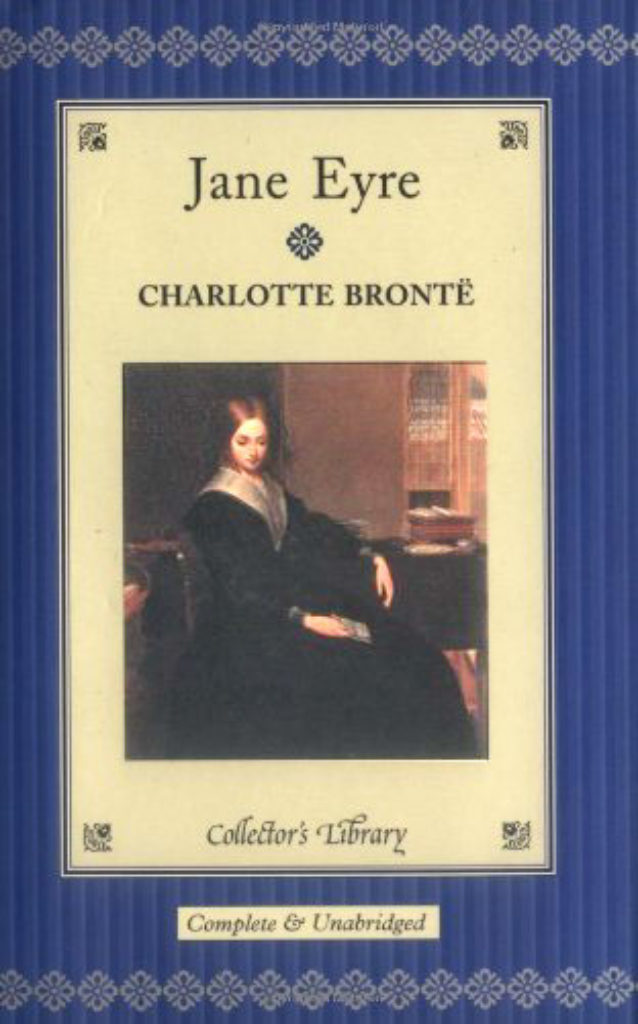
Readability Age Range
- Originally published by Service & Paton, although many other houses since have published it.
Year Published
Jane Eyre by Charlotte Bronte has been reviewed by Focus on the Family’s marriage and parenting magazine .
Plot Summary
Orphaned shortly after her birth, Jane Eyre is unloved and unwanted by the only family she knows — her aunt, Mrs. Reed of Gateshead, and Mrs. Reed’s three children, John, Eliza and Georgiana. Emotionally and physically abused at home, Jane leaps at the opportunity to attend Lowood boarding school, a charitable institution designed to provide an education for poor and orphaned girls. Although Jane quickly begins to enjoy her studies and makes friends and acquaintances among staff and students, all the girls are subjected to scant, ill-prepared food, harsh discipline and unhealthy living conditions. One spring, many of the students, including Jane’s best friend, Helen, die. After this tragedy, public attention focuses on the school, and conditions improve. Jane eventually becomes a teacher and is reasonably content to continue living the adequate, but Spartan, lifestyle to which she has become accustomed.
When Jane is 18, her favorite teacher, Miss Temple, gets married and leaves the school. She takes with her the sense of peace Jane experienced at Lowood. Feeling restless and curious about the outside world, Jane decides to leave as well and advertises in the newspaper for the position of governess. At Thornfield Hall, she finds a position as the governess to Adele, a young French girl who is the ward of an absentee master, Mr. Rochester. His housekeeper, Mrs. Fairfax, is kind and pleasant, and Jane’s life settles into a comfortable, though not exciting, routine. She still longs to see more of the world.
That changes when Mr. Rochester returns home from abroad. Jane enjoys engaging in witty, enigmatic conversation with him in the evening firelight. She even thinks she may be falling in love with him — and sometimes dares to hope that her feelings might be reciprocated.
When Mr. Rochester begins to court Blanche Ingram, a beautiful heiress from a nearby estate, Jane resigns herself to his imminent marriage and makes plans to quit Thornfield. She leaves earlier than expected when a summons comes from Mrs. Reed of Gateshead. Jane’s cousin John has committed suicide, and Mrs. Reed is on the brink of death.
Jane travels to Gateshead, stays with her cousins until her aunt’s death and learns that she has a wealthy relative, John Eyre of Madeira, who would like to adopt her and bequeath her his fortune. She plans to write to him upon her brief return to Thornfield, but when she arrives, she is immediately distracted. Mr. Rochester, it seems, was courting Blanche only to stoke the flames of jealously in Jane. He declares his love for her and asks Jane to marry him. During their month-long engagement, Jane acts particularly peevish, disdaining the well-meaning gifts of clothing and jewelry given to her by Mr. Rochester so that he will think twice before marrying a poor governess like herself. Her joy is also marred by the odd behavior of the seamstress, Grace Poole, whose creepy laughter and penchant for setting fires and attacking guests has her nerves on edge. Two nights before her wedding, Jane dreams of a dark figure that hovers over her bed and rips her wedding veil in two. When she wakes up, the veil is torn in half on the floor.
At the church, just as the couple are about to say their vows, Mr. Mason, a former houseguest of Mr. Rochester, interrupts. He says that Mr. Rochester has a wife still living, his sister Bertha Mason. Mr. Rochester doesn’t deny it. He leads the small wedding party back to Thornfield and into a windowless room where Grace Poole spends most of her time. But Grace is not the only woman in the room. Jane recognizes the second woman, huge and dark, as the woman from her dream. Bertha attacks Mr. Rochester, but he subdues her as gently as possible and introduces her as his wife. He tries to convince the minister that he should be allowed to take another wife, since his first is violent and insane. The minister doesn’t agree. Mr. Rochester attempts to convince Jane to live with him as his wife, but she refuses and flees Thornfield in secret. Mr. Rochester attempts to find her in vain.
Jane is homeless and has little money or food. She hires passage on a carriage for as far away as her limited funds will allow, then walks over the moors to a small town, but she is repeatedly denied food and shelter. Close to death, she knocks on the door of a small house in the middle of a field. The housekeeper turns her away, but the house belongs to St. John, the minister, and he lets her in. He and his sisters nurse Jane back to health, and St. John finds her a teaching position in the village. Jane attempts to conceal her true identity, but when St. John discovers who she is, she learns that she and her rescuers are in fact cousins, and that her uncle in Madeira has died and left her a fortune of 20,000 pounds. She splits it evenly among the four of them and delights in having a home and a family at last. St. John plans to be a missionary, and he tries to convince Jane to go with him to India, believing that her submissive, helpful spirit will make her a great missionary’s wife. Jane knows that he doesn’t love her, and she refuses. He persists in asking her, and she is almost ready to accept, when she hears Mr. Rochester crying out for her.
Jane leaves immediately for Thornfield, but when she arrives, she finds only the burnt and empty shell of a building. She learns that a few months after she left, Mr. Rochester’s wife escaped from her room and set the house on fire. Mr. Rochester managed to save all of the servants and was trying to save his wife, but she jumped off the burning roof, which then fell on him. He lost one eye and was blinded in the other, and he had to get one hand amputated. He now lives the life of a hermit, with only two servants to care for him.
Jane seeks him out. Reunited, the lovers are more in love than ever. They marry within the week. Their relationship, built on mutual need and respect and adherence to God’s will, is stronger than it has ever been. They have a son, and Mr. Rochester gets some sight back in one eye. They live happily together and are visited frequently by Jane’s cousins Mary and Diana, who also marry good men. St. John fulfills his dream of becoming a missionary and looks forward to dying and seeing Christ.
Christian Beliefs
Biblical references and Christian beliefs and principles appear frequently throughout the book. Jane’s childhood friend Helen encourages Jane to become like Christ, who loved His enemies. She looks forward to spending eternity with God, whom she describes as her Father and her friend. Later, Jane’s character bears witness to Helen’s influence, as she grows from a restless, bitter child into a selfless, forgiving young adult who would rather deny herself love and joy than break any of God’s commands. Jane reads her Bible and prays regularly, even as a child. She asks God for help in difficult situations.
Several of the characters use Christian beliefs to manipulate and terrify others, particularly children. A maid at Gateshead insinuates that God might strike Jane dead if she has a temper tantrum. Lowood is a Christian institution, and the pupils attend church every Sunday, recite Scripture, listen to sermons and pray before and after meals. Mr. Brocklehurst, the clergyman who runs Lowood, is strict and hypocritical. When he first meets Jane, he tells her that she is wicked and that she will go to hell. Later, after she breaks a slate, he calls her a liar and a servant of Satan. While his wife and daughters are dressed in the most expensive clothes and latest fashions, he demands that the Lowood students be given only the barest necessities, be subjected to the strictest discipline and that any trace of vanity be removed — to the extent of cutting off the hair of any girl who has arranged it too pleasingly.
Several references to Catholicism appear, most notably that Adele says her mother has gone to the Holy Virgin and that Mr. Rochester is raising Adele to expiate various sins. Eliza Reed, Jane’s cousin, becomes a nun.
When she first arrives at Thornfield, Jane thinks Grace may be demon-possessed.
Mr. Rochester becomes an idol to Jane. In the beginning stages of their relationship, her love for him makes her forget to think about God. Later, Mr. Rochester apologizes for sinning against Jane by trying to make her wed him illegally. He thanks God for His mercy and asks for divine aid to live a better and purer life.
St. John is a selfless, devoted Christian, but Jane senses that he is bitter and not at peace. He looks forward to the afterlife as his reward for the sacrifices he is making on earth.
Other Belief Systems
Bessie, Jane’s childhood nursemaid, tells the children stories about fairies and imps. Jane imagines that Mr. Reed’s ghost rises from the dead, and the servants wonder if she really did see something. As a child, Jane thinks that Gulliver’s travels are factual. She also believes that elves exist but that they have left England and gone to a savage country.
Jane mistakes Mr. Rochester’s Newfoundland dog for a gytrash, a mythical spirit that haunts solitary spaces. She thinks that goblins could live in animal bodies. Mr. Rochester jokingly calls Jane a sorceress.
References to pagan mythology smatter the banter between Jane and Mr. Rochester. Mr. Rochester disguises himself as a Gypsy and tells people their fortunes.
Jane thinks Bertha Mason looks like a vampire.
Authority Roles
Mrs. Reed is lenient with her own children but deliberately abusive toward Jane. She keeps her isolated from her own children as much as possible. She tells Mr. Brocklehurst that Jane is a liar. Before she leaves for Lowood, Jane stands up to Mrs. Reed in a fit of temper.
Mr. Brocklehurst uses Christianity as an excuse for privations, hypocrisy, abuse and threats. When he visits Lowood, Mr. Brocklehurst orders a girl’s hair cut off because it is naturally curly and is therefore “vain.” While he continues to berate Miss Temple for granting the students the most meager of luxuries and allowing the girls to display the smallest of vanities, his wife and daughters, sumptuously attired and with their hair arranged according to the latest fashions, look on. The students and teachers of Lowood dislike him intensely. Miss Temple, the superintendent of Lowood, is kind, good and generous. Some of the teachers are kind; others are harsh.
Bessie, a nursemaid at Gateshead, sometimes shows genuine affection for Jane. They meet happily years later; Bessie has named her daughter after Jane.
Mr. Rochester is a good man, fair with his tenants and servants, but he is also eccentric, proud and willful. He has a quick temper. He lies to Jane about Bertha because he’s afraid of losing her love. Although he despises his connection with Bertha, he does everything in his power to keep his wife alive.
St. John, much like Mr. Brocklehurst, tries to use Christianity, specifically the threat of hell, to manipulate Jane and convince her to join him as his wife.
Profanity & Violence
There are several misuses of God’s name, as well as h— and d–n .
John Reed continually bullies Jane while Mrs. Reed and the servants look the other way. He punches her and throws books at her, causing her to hit her head against a door so hard that she begins to bleed. He physically attacks her and pulls her hair. Jane retaliates by punching John in the nose. Mrs. Reed shakes Jane and boxes her ears. Bessie, the maid, threatens to tie Jane to a chair.
Helen is whipped for not paying attention in school. The students at Lowood are not fed enough, and the big girls steal food from the little ones. Helen dies while Jane sleeps beside her.
John Reed kills and tortures animals for fun. Mr. Rochester duels a rival and leaves a bullet in his arm. Bertha Mason stabs and bites her brother, leaving him soaked in blood. She tries to bite Mr. Rochester’s neck. She sets fires and ultimately succeeds in burning down Thornfield Hall. John Reed commits suicide.
Jane dreams of falling off a wall with a child in her arms. Mr. Rochester plans to shoot himself. Bertha jumps off Thornfield’s roof, spattering brains and blood on the rocks below. Mr. Rochester loses an eye, becomes blind and has a hand amputated.
Sexual Content
Family members and friends of both genders kiss and hug each other in nonsexual gestures of friendship. Adele sings a song about a woman whose lover betrayed her.
Adele is the daughter of Mr. Rochester and his former mistress, Celine Varens. He left her after he found out she didn’t really love him and was cheating on him with another man. Unable to find a wife he could love, he had two other mistresses besides her.
Mr. Rochester and Jane kiss and embrace. He pinches Jane and tweaks her ear as rough gestures of love. After Jane learns about Bertha, she refuses all further gestures of affection and refuses to stay with him, even though he promises to be faithful to her for life.
St. John kisses Jane.
Discussion Topics
Get free discussion questions for this book and others, at FocusOnTheFamily.com/discuss-books .
Additional Comments
Alcohol and tobacco: Mr. Loyd, the apothecary, uses snuff. Bertha’s mother was an alcoholic. Grace Poole occasionally overindulges in gin. Jane sips wine to revive herself after a time of fasting.
Racism: An undertone of racism, consistent with the beliefs of the period, appears occasionally throughout the book. Slavery is mentioned, but not endorsed.
Movie tie-in: Producers often use a book as a springboard for a movie idea or to earn a specific rating. Because of this, a movie may differ from the novel. To better understand how this book and the movie differ, compare the book review with Plugged In’s movie review for Jane Eyre .
You can request a review of a title you can’t find at [email protected] .
Book reviews cover the content, themes and worldviews of fiction books, not their literary merit, and equip parents to decide whether a book is appropriate for their children. The inclusion of a book’s review does not constitute an endorsement by Focus on the Family.
Latest Book Reviews
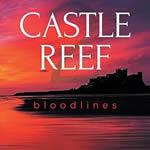
Castle Reef 2: Bloodlines
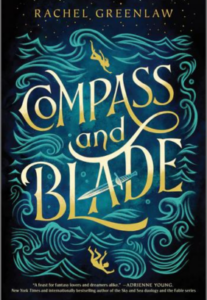
Compass and Blade
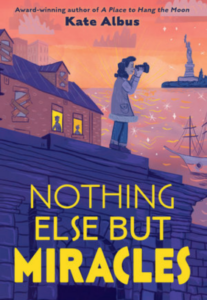
Nothing Else But Miracles
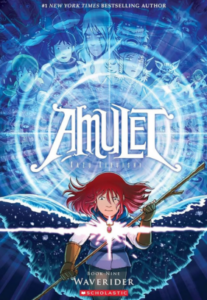
Waverider (Amulet #9)
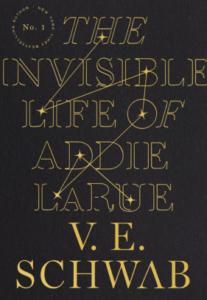
The Invisible Life of Addie LaRue
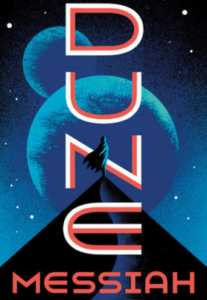
Dune Messiah
Weekly reviews straight to your inbox.


Book Review: Jane Eyre by Charlotte Brontë
The power of redemptive suffering.

Jane Eyre , written almost two hundred years ago, has, by its distance in time, a kind of enchantment caused by its unfamiliarity, with the elements of country manors, social propriety, hierarchical castes and its general lack of modern technology lending to it a mystery and appeal akin to fantasy worlds. J.R.R. Tolkien similarly recognized “the enchantment of distance, especially of distant time” in the futuristic story The Time-Machine by H.G. Wells. [1] It can thus be enjoyable for this reason alone, as well as for the sheer edification of its artistic creativity and elegant prose; nevertheless, its greatest relevance to the modern world, or to any time in the future, is due ultimately to its exemplification of spiritual and moral principles which are, by their eternal truth, both universal and perennial.
The childhood of Jane Eyre focuses on the complex and often conflicted relationships between truth and humility, justice and mercy. In her strong sense of justice and love of the truth, Jane rightly hates the evil treatment she receives from her guardian Mrs. Reed and housemates at Gateshead, as well as the puritanical cruelty and hypocrisy of Mr. Brocklehurst, owner of Lowood Institution to which Jane is sent. Helen Burns, Jane’s schoolfriend, clarifies for Jane that, by responding to those who harm her in the same spirit of malice and reciprocity with which she was harmed, she is becoming like those she hates and letting their actions determine her own. For this reason, while Jane’s lack of humility and mercy leads her to say, “When we are struck at without a reason, we should strike back again very hard; I am sure we should — so hard as to teach the person who struck us never to do it again”, Helen can respond, “It is not violence that best overcomes hate – nor vengeance that most certainly heals injury”, offering her instead the example of Christ’s love to follow. [2] While many literary critics have seen in Jane’s impetuosity and rebelliousness an anti-Christian theme, the character of Helen and the admiration Jane holds for her disputes such a view. As Jeanette Flood writes, “God cares about [Jane] and her salvation; hence obeying his laws shows not only proper love of self but also love for God. Brontë is depicting a struggle against temptation, not justifying selfishness.” [3] Helen thus counseled her, “Hush, Jane! you think too much of the love of human beings; you are too impulsive, too vehement; the sovereign hand that created your frame, and put life into it, has provided you with other resources than your feeble self, or than creatures feeble as you.” [4]
Missio Dei is a reader-supported publication. To receive new posts and support my work, consider becoming a free or paid subscriber.
After her time at Lowood, first as a student and finally for two years as a teacher, Jane begins what will be the most impactful portion of her life, that which will reveal her true vocation while also affording the strongest temptations she will have to face. The center of this experience is Mr. Rochester, whose passionate, intellectual and mysterious nature ignites Jane’s affection, in whom she sees a truly complementary companion and friend and her first real chance at fulfillment in life. She thus desires above all things to be his wife, yet, by this authentically good desire, she is also given a test to determine the order of her love: Mr. Rochester as husband, or Mr. Rochester as idol? The love of God above all things, not the exclusion of lesser goods but in prioritization above them, is shown to be an overarching theme of Jane Eyre , one which was paramount for Brontë herself. [5]
In his Summa theologiae , St. Thomas Aquinas taught,
Now the good which is difficult or arduous, considered as good, is of such a nature as to produce in us a tendency to it, which tendency pertains to the passion of hope ; whereas, considered as arduous or difficult, it makes us turn from it; and this pertains to the passion of despair . [6]
Mr. Rochester, explaining his melancholic condition to Jane, thus equates remorse with despair, in that, by holding to the remorse he feels for his past sins, he has withdrawn from an arduous good, namely purity and the joy that accompanies it. He thus fell into one of the consequences of despair, by which rejection of the good as too difficult to attain leads to fascination with a “mutable good” and the vices that can accompany its improper enjoyment. [7] While he spurns Jane’s attempts to correct him, counselling him that repentance was the “cure” of remorse and that persisting in sinful habits would lead him to only “degenerate further” into misery and corruption, [8] he also acknowledges his faults and desires to reform himself, admitting that he is “a trite commonplace sinner, hackneyed in all the poor petty dissipations with which the rich and worthless try to put on life”. [9]
Although he recognizes his ulcerous remorse and refusal to repent of it as the source of his despair, Mr. Rochester still seeks distraction in created goods, whether sensual pleasures or even the consolation of a spouse, instead of true interior conversion. For this reason, before true conversion, he must undergo suffering, great in proportion to his sins. Contrary to “Freudian and feminist critics” who have seen his abasements and humiliations as making him into an “emasculated (and ‘symbolically castrated’) wreck”, he in fact becomes, according to Eleanor Bourg Nicholson, “fully a man,” with suffering not destroying his nature or dignity but regenerating them through a purgative “purification”. [10] G.K. Chesterton provides a brilliant and witty analysis of Mr. Rochester: “And certainly Mr. Rochester... was simply individualistic not only in practice, but in theory. Now any one may be so in practice: but a man who is simply individualistic in theory must merely be an ass.” [11]
Exemplifying a truly virtuous woman and potential wife, Jane guides Mr. Rochester to virtue, expecting from him the dignity and honesty she deserves while still respecting his masculinity and privacy. It was, as she later explains, “my nature to feel pleasure in yielding to an authority… and to bend, where my conscience and self-respect permitted, to an active will.” [12] In this way, she correctly fulfills St. Paul’s command for wives to “be subject to your husbands, as it behoveth in the Lord.” (Col 3:18) Nevertheless, after discovering his secret wife, she pronounces that to obey his request for her to become his mistress would indeed be wicked. [13] Finally pronouncing that to obey his request for her to become his mistress would indeed be wicked, [14] she then offers him a powerfully Christian counsel for how to maintain interior peace and find salvation even after the lost opportunity of a happy marriage: “Do as I do: trust in God and yourself. Believe in heaven. Hope to meet again there… I advise you to live sinless, and I wish you to die tranquil.” [15]
Later, Jane remarks, quoting from Philippians 4:7, that the Christian life should confer “that peace of God which passeth all understanding”, [16] and her witness to Mr. Rochester just before their parting is one which any Christian, and especially those living in the modern world of relativism, would do well to heed:
The more solitary, the more friendless, the more unsustained I am, the more I will respect myself. I will keep the law given by God; sanctioned by man. I will hold to the principles received by me when I was sane, and not mad - as I am now. Laws and principles are not for the times when there is no temptation: they are for such moments as this, when body and soul rise in mutiny against their rigour; stringent are they; inviolate they shall be. If at my individual convenience I might break them, what would be their worth? [17]
Fleeing from her newfound home and true love, clinging only to the security of a clear conscience, Jane wanders in the wilderness. During her exodus and abandonment to Providence, comforted only by the beauties of Creation and the prayerful assurance of God’s presence then finding shelter only to be turned away by the servant Hannah for appearing to be a beggar, Jane corrected her “rather severely,” saying, “I do think hardly of you… because you just now made it a species of reproach that I had no ‘brass’ and no house… if you are a Christian, you ought not to consider poverty a crime.” [18] At this house, however, she is finally led to the most miraculous “coincidence” in the story: she stumbles upon three people who just happen to be her long-lost cousins, from whom she learns that an uncle has died and left her a great inheritance which she generously shares with her cousins. [19]
Despite these newfound and unexpected joys, Jane is given another temptation, less ardent but more tenacious than that of Mr. Rochester: to become a missionary and functional wife to her puritanical parson cousin, St. John Rivers (whose name, according to James Bond, is pronounced “Sinjin”). Jane resisted for both similar and dissimilar reasons to her rejection of Mr. Rochester: she upheld the fire of conscience against the fire of Mr. Rochester’s passion, but fought the cold presumption of St. John with the fire of her passion and, ultimately, of her conscience, which saw not only the lack of real love in his marriage proposal, but also the immorality of such a marriage and the effects of a missionary life in India which, due to her physical frailty and unrequited love, would for Jane “be almost equivalent to committing suicide.” [20] In recognition that her true vocation is with Mr. Rochester regardless of its apparent impossibility, Jane admonishes St. John for desiring a marriage based on utility rather than love. As Nicholson explains, “In the end he insists upon an unnatural nature for himself, in direct conflict with itself… The marriage St. John proposes is… in accordance with the unnaturalness of the man himself.” [21]
Although St. John is admired by Jane for his kindness and high principle, his proposal is, according to his sister Diana, “unnatural”. [22] As Eleanor Bourg Nicholson explains, “In the end he insists upon an unnatural nature for himself, in direct conflict with itself… The marriage St. John proposes is… in accordance with the unnaturalness of the man himself.” [23] Jane knew that the pain of suppressing her passionate nature and enflamed conscience beneath St. John’s unsympathetic obligations, lack of marital affection and Calvinistic denigration of the body would lead only to her misery and death.
Like all great stories, Jane Eyre ends with marriage and new life. After learning of the death of Mr. Rochester’s wife and his mutilation in her burning down of Thornfield, Jane was able to harmonize her passion and conscience, returning to her true love, but only marrying him if legitimately and after his own growth in humility and piety through his redemptive sufferings. [24] Through Mr. Rochester’s repentance, Brontë reveals the true heart of the story: the conversion of sinners through suffering and the witness of heroic virtue. His prayer is thus an imitable act of contrition concluding his long spiritual journey: “I thank my Maker, that, in the midst of judgment, he has remembered mercy. I humbly entreat my Redeemer to give me strength to lead henceforth a purer life than I have done hitherto!” [25]
[1] J.R.R. Tolkien, “On Fairy-Stories,” at University of Houston, https://uh.edu.
[2] Charlotte Brontë, Jane Eyre (San Francisco: Ignatius, 2014), 75-76.
[3] Jeanette Amestoy Flood, “Eyre of Rebellion?” in Jane Eyre (San Francisco: Ignatius, 2014), 615.
[4] Charlotte Brontë, Jane Eyre (San Francisco: Ignatius, 2014), 91.
[5] Eleanor Bourg Nicholson, “Anatomy of a Hero: Redeeming a ‘Catholic’ Rochester,” in Jane Eyre (San Francisco: Ignatius, 2014), 636.
[6] Thomas Aquinas, Summa theologiae , I-II, q. 23, a. 2, at New Advent, www.newadvent.org.
[7] Thomas Aquinas, Summa theologiae , II-II, q. 20, a. 1 ad 1, at New Advent, www.newadvent.org.
[8] Brontë, Jane Eyre , 174.
[9] Brontë, Jane Eyre , 173.
[10] Nicholson, “Anatomy of a Hero,” 642.
[11] G.K. Chesterton, The Victorian Age in Literature (New York: Henry Holt and Company, 1913), 27. Kindle.
[12] Brontë, Jane Eyre , 432.
[13] Brontë, Jane Eyre , 400.
[14] Brontë, Jane Eyre , 400.
[15] Brontë, Jane Eyre , 400.
[16] Brontë, Jane Eyre , 442.
[17] Brontë, Jane Eyre , 401.
[18] Brontë, Jane Eyre , 430.
[19] Brontë, Jane Eyre , 484.
[20] Brontë, Jane Eyre , 518.
[21] Nicholson, “Anatomy of a Hero,” 639.
[22] Brontë, Jane Eyre , 520.
[23] Eleanor Bourg Nicholson, “Anatomy of a Hero: Redeeming a ‘Catholic’ Rochester,” in Jane Eyre (San Francisco: Ignatius, 2014), 639.
[24] Brontë, Jane Eyre , 557.
[25] Brontë, Jane Eyre , 559-560.
Ready for more?

"Morality and the Modern Reader: Why 'Jane Eyre' Endures"
“I am no bird; and no net ensnares me: I am a free human being with an independent will, which I now exert to leave you.” — Charlotte Brontë, Jane Eyre
Analysis of the quote - This quote is from Charlotte Brontë's novel "Jane Eyre" and is spoken by the protagonist, Jane Eyre. The quote reflects Jane's strong sense of individuality and independence. Let's break down the analysis:
"I am no bird": This metaphorical statement suggests that Jane refuses to be confined or limited. Birds are often associated with freedom, and by stating that she is "no bird," Jane emphasizes her desire to break free from any constraints or limitations.
"and no net ensnares me": Continuing the metaphor, Jane asserts that she is not caught in any net. Nets are used to capture and restrict movement, so Jane is declaring her freedom from entrapment or control by external forces.
"I am a free human being with an independent will": This part of the quote is a clear declaration of Jane's autonomy. She asserts her freedom as a human being and highlights the presence of her independent will. Jane sees herself as an individual with the agency to make her own choices.
"which I now exert to leave you": In the context of the novel, this indicates that Jane is using her independent will to leave someone or something behind. It's a statement of self-empowerment and determination to pursue her own path, even if it means separating from someone or something that may have been a part of her life.
In summary, this quote encapsulates Jane Eyre's assertiveness, independence, and determination to control her own destiny. It reflects a theme of self-discovery and the struggle for personal freedom in the face of societal expectations and constraints.
"Jane Eyre" by Charlotte Brontë is a classic novel that delves into themes of social class, morality, independence, and the quest for personal identity. The story unfolds through the first-person narrative of its titular character, Jane Eyre, a young orphan who faces adversity and challenges throughout her life.
1. Bildungsroman and Character Development:
The novel can be classified as a bildungsroman, as it follows Jane's growth and development from childhood to adulthood. Her journey is marked by various stages of self-discovery, moral growth, and the assertion of her individuality. The reader witnesses Jane's evolution from a mistreated orphan to a strong and independent woman.
2. Social Critique: "Jane Eyre" provides a critique of the social norms and inequalities of the 19th century. Jane's position as an orphan and governess highlights the limitations placed on women and those of lower social status. The novel challenges conventional expectations of women and explores the consequences of defying societal norms.
3. Romantic Elements: The novel incorporates elements of romance, particularly in Jane's relationship with Mr. Rochester, her employer. The romantic plot is, however, unconventional, featuring a strong-willed and morally principled heroine who insists on equality in her relationships. The obstacles Jane faces contribute to the complexity of the romance, adding depth to the narrative.
4. Gothic Elements: "Jane Eyre" also contains gothic elements, especially in the depiction of Thornfield Hall, Mr. Rochester's estate. The mysterious occurrences and the presence of the enigmatic Bertha Mason contribute to the gothic atmosphere, creating a sense of foreboding and suspense.
5. Morality and Religion: Religious and moral themes permeate the novel. Jane's strong moral convictions guide her actions and decisions, providing a moral compass for the narrative. The novel also engages with questions of morality, duty, and forgiveness, particularly in the face of challenges and betrayals.
6. Feminism and Independence: Jane Eyre is often considered a feminist character. Her refusal to conform to societal expectations, her desire for intellectual and emotional equality, and her determination to maintain her independence contribute to the novel's feminist undertones. Jane's journey is one of self-empowerment, and her choices reflect a feminist perspective for the time in which the novel was written.
3 reasons this is a ‘Classic’ must read
Timeless Themes and Universality:
The novel explores universal themes such as love, morality, independence, and the search for identity. These themes resonate across different cultures and time periods, making the story relatable to readers of various backgrounds.
The exploration of social class, gender roles, and the individual's struggle against societal expectations addresses enduring issues that remain relevant, ensuring the book's timeless appeal.
Complex Characters and Psychological Depth:
Charlotte Brontë created complex and psychologically rich characters, especially in the protagonist, Jane Eyre. Readers are drawn into the inner workings of Jane's mind as she grapples with moral dilemmas, societal constraints, and her own desires.
Characters like Mr. Rochester and Bertha Mason add layers of complexity, making the novel a nuanced exploration of human relationships and the complexities of love.
Innovative Narrative Technique and Style:
"Jane Eyre" was groundbreaking in its use of a first-person narrative from the perspective of a female protagonist. Jane's voice is strong, distinctive, and memorable, providing readers with a unique and intimate connection to the character.
The novel's blend of Gothic elements, social commentary, and a romantic plot defied conventional genre boundaries of its time. Brontë's innovative approach to storytelling has contributed to the enduring influence of "Jane Eyre" in the literary world.
Disclaimer: This content has been generated with the inputs of AI. READ ALSO: Review: 'The Stargazers' by Harriet Evans
READ ALSO: Review: 'An Unfinished Search' by Rashmi Narzary
For more news like this visit TOI . Get all the Latest News , City News , India News , Business News , and Sports News . For Entertainment News , TV News , and Lifestyle Tips visit Etimes
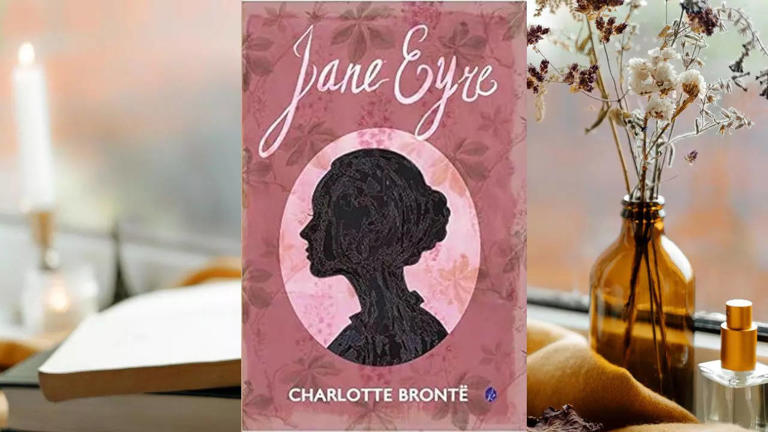

Fabulous Reads: Debut novel a treat for Jane Eyre fans
Book review - the secrets of hartwood hall by katie lumsden.

The Secrets of Hartwood Hall, Katie Lumsden, Penguin Random House, ISBN: 9780241556078
THIS gothic mystery, while not incredibly fast-paced, was still a gripping read.
It’s the late 1850s, England. Margaret Lennox, a young widower with a seemingly dark secret and no inheritance from her late husband, is desperate for a fresh start.
With only a few recommendations from the families she worked for, years prior to her marriage, she finds herself employed as a governess for a little boy, Louis, at an isolated and slightly dilapidated mansion in the countryside, known to the locals as Hartwood Hall.
Margaret’s employer, who is also widowed, Mrs Evarsham, is very unpopular and mistrusted in the superstitious little farming community.
The young governess soon finds herself feeling unsettled and suspicious in her new position with tales of ghosts, the discovery of an off-limits east wing as well as unexplained noises and eerie sightings.
Things become even more complicated when one of the other servants threaten to uncover her secret. Looking for comfort and a distraction, a lonely and desperate Margaret starts a forbidden love affair with the Hartwood Hall gardener, Paul.
As the relationship puts both of their positions at risk, she increasingly feels torn between her fondness of Louis and her growing affection for Paul.
While there isn’t a whole lot of world-building, the book is slow-paced. It really is primarily about the inter-relationships and uncovering of pieces of the puzzle.
There were so many loose threads that it took me a while before I was even remotely able to try and guess the truth.
However, as satisfying as the mystery was, I struggled to emotionally connect with any of the characters – despite the fact that they had all endured truly awful pasts.
I could empathise, and in some cases, relate to their thoughts and feelings, but I was never emotionally roused by any of the events or revelations.
What’s more, the romance element, while, in my opinion, was tastefully done, wasn’t very convincing. I didn’t feel the chemistry between them.
The ending was a little more exciting, however, compared to the rest of the book, but felt a little rushed and just a little too convenient.
I truly loved how the book featured such strong female characters in a book centred in the 1800s. I got Josephine March ( Little Women ) and Elizabeth Bennet ( Pride and Prejudice ) vibes from Margaret. If you enjoy period dramas, you will also enjoy The Secrets of Hartwood Hall . – Mariclair Smit – 3/5 stars
Durban Metro Police officer appears in court filled with slain victim's loved ones
Young skaters excel at national competition, related articles.

Elections 2024: 3 things you may not know about the 2024 general elections

Aweh! Find out what’s happening in Durbs

City on a mission to find the next gospel star

Fun day out for disabled community members

IMAGES
VIDEO
COMMENTS
Jane Eyre Review: You Can Impact Society and Make a Change Irrespective of Your Background, Gender or Age . Charlotte Brontë's eponymous book, 'Jane Eyre,' shows us how integrity and good ideas can help bring a meaningful change in society - regardless of age, gender, ethnicity, or skin color. 10-year-old Jane overcomes maltreatment in ...
Jane Eyre is a book that is bold for the way it inspires feminism, courageous in the way it challenges the accepted norms of society and religion but is also respectful. There is beauty in the storytelling, sincerity in these righteous but flawed characters, and artistry in the way the themes have been woven into the story - an epic ...
With a rural 19th-century England setting, Brontë has created a fictional account of the early life of Jane Eyre, which every reader can not help but enjoy. In this novel, we get to recognize the conflicts between love and independence, conscience and passion, and the struggle of a young girl and woman to maintain her self-esteem.
The 100 best novels: No 12 - Jane Eyre by Charlotte Brontë (1847) Charlotte Brontë's erotic, gothic masterpiece became the sensation of Victorian England. Its great breakthrough was its ...
Introduction: Jane Eyre by Charlotte Brontë is a seminal piece that burgeons with profound themes and rich character development, making it a must-read for those intrigued by 19th-century literature.This review delves into the essence of Brontë's narrative, examining its literary anatomy and socio-cultural underpinnings.
Jane Eyre is a 19th-century gothic romance of the. Positive Role Models. Jane Eyre possesses such impressive strength of ch. Violence & Scariness. As a young child, Jane is pushed and struck by her. Sex, Romance & Nudity Not present. The characters kiss and describe romantic feelings. Language Not present. Products & Purchases Not present.
Jane Eyre is a novel by English writer Charlotte Brontë, published under the pen name "Currer Bell", on 16 October 1847, by Smith, Elder & Co. of London, England. The first American edition was published the following year by Harper & Brothers of New York.
It is indubitable that this book is a masterpiece, but I also believe it to be a book of self-discovery. The love story is one of the best I have ever come across, and the construction of every character is thoughtful and detailed. The dialogues simply bristle the skin. So, to everyone who is looking for something powerful and life-changing to ...
Elimagine. I learned only recently that Charlotte Bronte is a masterful writer. She crafted the story of Jane Eyre, a tale following young, abused Jane, through her experiences in school, then as ...
Jessica explores a timeless classic - Jane Eyre by Charlotte Bronte. The back cover is also plain brown, with three words at the top: "Mystery. Romance. Deception.". This immediately sparks intrigue, since few words have ever been more powerful. They bring to mind images of a jealous lover, a quarrel, and even perhaps a death.
Jane Eyre, novel by Charlotte Brontë, first published in 1847 as Jane Eyre: An Autobiography, with Currer Bell (Brontë's pseudonym) listed as the editor.Widely considered a classic, it gave new truthfulness to the Victorian novel with its realistic portrayal of the inner life of a woman, noting her struggles with her natural desires and social condition.
Some books are so famous that it seems redundant to review them, but it's always nice to see a classic book through new eyes. This is true of Jane Eyre, which continues to attract new generations of readers, who experience the book in a different way than its original readers, but continue to find its themes relevant and its story readable.It's easy to see why Jane Eyre has experienced the ...
Jane Eyre. Fiction Classics Abridged version. 5 Jan. Being a huge fan of the Bronte sisters and their work (and member of the Bronte society!), I approach any re-telling of their work, whether book or film, with the greatest caution. And yet, I discovered 'Jane Eyre' through reading an abridged version of the book which I found on the ...
After completing her schooling, Jane begins teaching at the school herself. But after realizing that she wants a wider experience of the world, she takes a job as a governess at Thornfield Hall. It is owned by Mr. Rochester, who Jane eventually falls in love with. The love story of Jane Eyre and Edward Rochester has been read by generations and ...
Jane Eyre (/ ɛər / AIR; originally published as Jane Eyre: An Autobiography) is a novel by the English writer Charlotte Brontë.It was published under her pen name "Currer Bell" on 19 October 1847 by Smith, Elder & Co. of London. The first American edition was published the following year by Harper & Brothers of New York. Jane Eyre is a bildungsroman that follows the experiences of its ...
Jane Eyre is a spectacular novel possessive of many powerful colors—a dark "brooding Gothic mystery", a shimmering complex romance, a work of remarkable character development, a careful intertwining of reality with fantasies and fairytales, and finally a strong feminism novel, passionately demanding equality, rights, and respect for women.
BOOK DESCRIPTION. Jane Eyre, first published in 1847 under the pseudonym Currer Bell, exploded into the English literary scene, capturing the hearts of many of the world's most prominent writers, including William Makepeace Thackeray, who called it a work "of extraordinary brilliance.". Bront's masterpiece, widely recognised as a ...
Jane Eyre Full Book Summary. Jane Eyre is a young orphan being raised by Mrs. Reed, her cruel, wealthy aunt. A servant named Bessie provides Jane with some of the few kindnesses she receives, telling her stories and singing songs to her. One day, as punishment for fighting with her bullying cousin John Reed, Jane's aunt imprisons Jane in the ...
To better understand how this book and the movie differ, compare the book review with Plugged In's movie review for Jane Eyre. You can request a review of a title you can't find at [email protected]. Book reviews cover the content, themes and worldviews of fiction books, not their literary merit, and equip parents to decide whether a book ...
Jane Eyre is an orphan, penniless and plain, but full of courage and spirit. She has endured incredible hardship to secure her humble status as a governess in the household of her brooding employer, Mr. Rochester. Jane's sharp wit and defiant nature meet with Rochester's sardonic temperament. The two become enmeshed in a deep, intense bond.
Aug 29, 2022. 6. 3. Share. Jane Eyre, written almost two hundred years ago, has, by its distance in time, a kind of enchantment caused by its unfamiliarity, with the elements of country manors, social propriety, hierarchical castes and its general lack of modern technology lending to it a mystery and appeal akin to fantasy worlds.
105163017. Analysis of the book. "Jane Eyre" by Charlotte Brontë is a classic novel that delves into themes of social class, morality, independence, and the quest for personal identity. The story ...
Book review - The Secrets of Hartwood Hall by Katie Lumsden. The Secrets of Hartwood Hall, Katie Lumsden, Penguin Random House, ISBN: 9780241556078. THIS gothic mystery, while not incredibly fast ...